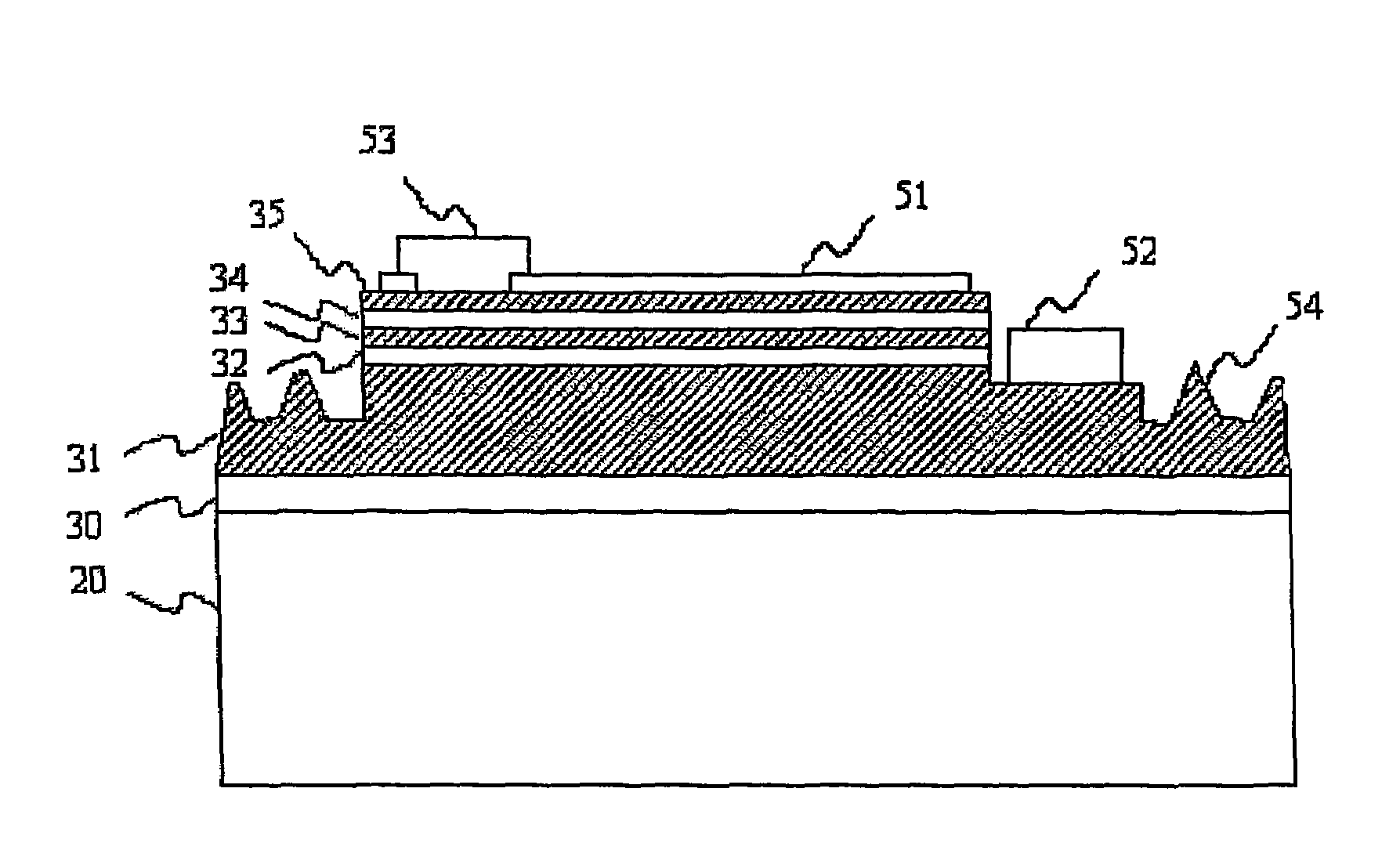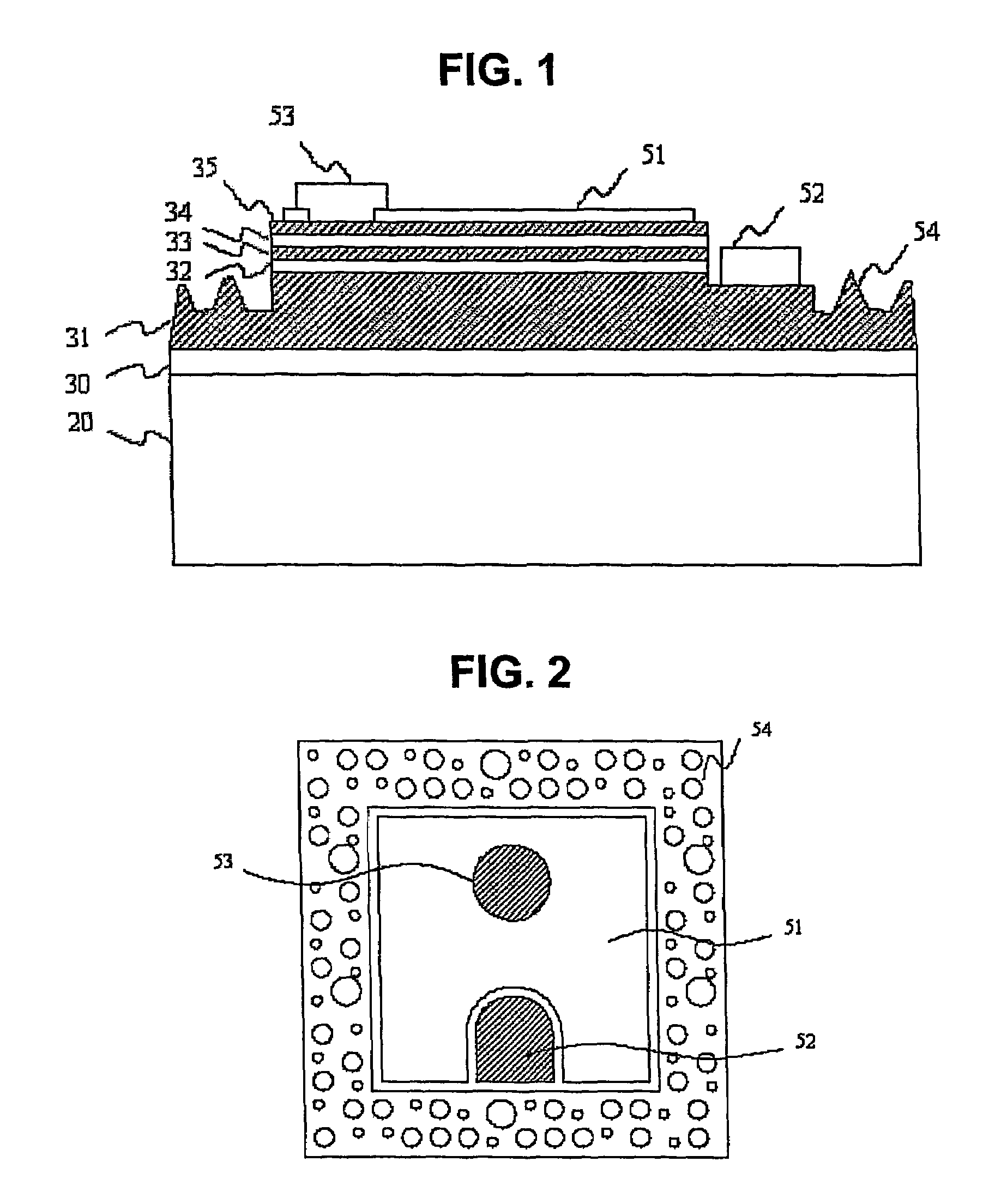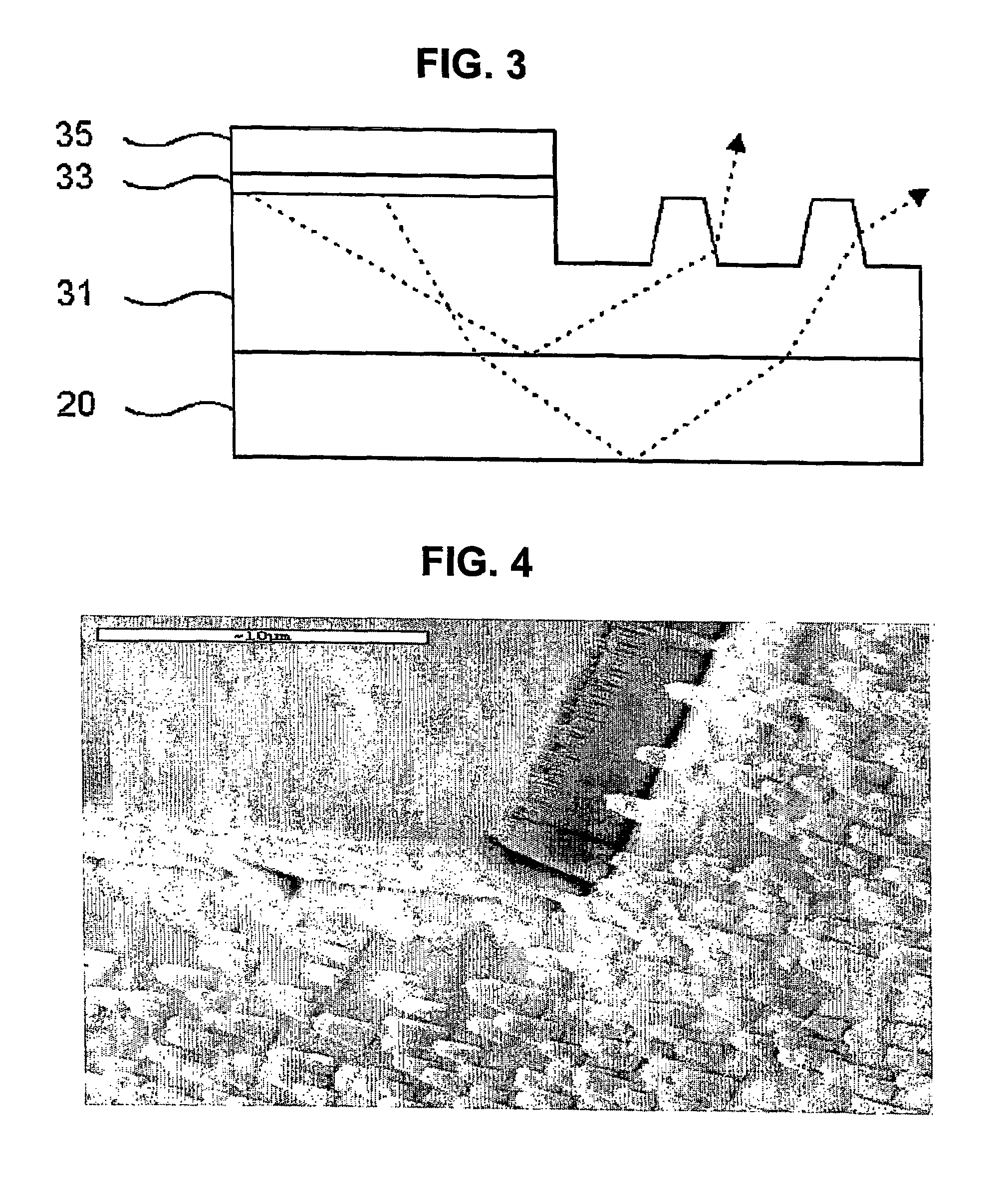III-nitride compound semiconductor light emitting device
a technology of compound semiconductors and light-emitting devices, which is applied in the direction of solid-state devices, semiconductor lasers, lasers, etc., can solve the problems of increasing the crystalline defect rate, difficult to apply such a technology applied to the gaas-based light-emitting device to the gan-based light-emitting device without hard work, and increasing the external quantum efficiency of the light-emitting device. , to achieve the effect of increasing the external quantum efficiency
- Summary
- Abstract
- Description
- Claims
- Application Information
AI Technical Summary
Benefits of technology
Problems solved by technology
Method used
Image
Examples
example 1
[0027]FIG. 1 is a cross-sectional view of a nitride semiconductor light-emitting device according to a first embodiment of the present invention. FIG. 2 is a plan view of the light-emitting device shown in FIG. 1.
[0028]Referring to FIG. 1, the light-emitting device includes a substrate 20, a buffer layer 30 epitaxially grown on the substrate 20, an n-type Al(x)ln(y)Ga(1-x-y)N layer 31 epitaxially grown on the buffer layer 30, an active layer 33 epitaxially grown on the n-type Al(x)ln(y)Ga(1-x-y)N layer 31, a p-type Al(a)ln(b)Ga(1-a-b)N layer 35 epitaxially grown on the active layer 33, a p-type electrode 51 and a p-type bonding pad 53 that electrically contact with the p-type Al(a)ln(b)Ga(1-a-b)N layer 35, and an n-type electrode 52 that electrically contacts with the n-type Al(x)ln(y)Ga(1-x-y)N layer 31. Also, protrusions 54 are formed on an exposed surface of the n-type Al(x)ln(y)Ga(1-x-y)N layer 31.
[0029]The present invention can be applied to light-emitting devices having a vari...
example 2
[0040]FIG. 6 is a cross-sectional view showing a nitride semiconductor light-emitting device according to a second embodiment of the present invention. FIG. 7 is a plan view of the light-emitting device shown in FIG. 6. A roughened surface 54B in FIG. 6 is formed by means of photoelectrochemical etching.
[0041]FIG. 8 is a view showing the principle of photoelectrochemical etching that is generated at a portion where the n-type Al(x)ln(y)Ga(1-x-y)N layer 31 and an etch solution 41 contact with each other.
[0042]When an ultraviolet ray 40 is irradiated to the n-type Al(x)ln(y)Ga(1-x-y)N layer 31, electrons and holes are formed on the surface of the n-type Al(x)ln(y)Ga(1-x-y)N layer 31 by means of exitation energy. The electrons (e) formed move into the semiconductor and the holes (h) move to the surface of the semiconductor.
[0043]If the n-type Al(x)ln(y)Ga(1-x-y)N layer 31 is GaN, the holes (h) that moved to the surface of the semiconductor are combined with GaN to separate gallium (Ga)...
example 3
[0049]FIG. 12 is a cross-sectional view of a nitride semiconductor light-emitting device according to a third embodiment of the present invention. FIG. 13 is a plan view of the light-emitting device shown in FIG. 12. Roughened surface 54C in FIG. 12 is formed by surface gratings.
[0050]The shape of the surface grating 54C formed using a mask pattern can be hexagonal, square, triangular or the like and a combination of 2 or 2 or more of them. Each of the surface gratings may have a predetermined size.
[0051]In order to maximize the density of the surface gratings 54C, it is preferred that the shape of the surface grating 54C is hexagonal. Also, it is preferred that the surface area of the surface grating is in the range of 1.5 μm2 to 4 μm2 and the height of the surface grating is in the range of 0.5 μm to 1.5 μm. The portion in which the surface gratings 54C are formed is the edge region other than the region which is the light-emitting portion of the device and the region for contact ...
PUM
 Login to View More
Login to View More Abstract
Description
Claims
Application Information
 Login to View More
Login to View More - R&D
- Intellectual Property
- Life Sciences
- Materials
- Tech Scout
- Unparalleled Data Quality
- Higher Quality Content
- 60% Fewer Hallucinations
Browse by: Latest US Patents, China's latest patents, Technical Efficacy Thesaurus, Application Domain, Technology Topic, Popular Technical Reports.
© 2025 PatSnap. All rights reserved.Legal|Privacy policy|Modern Slavery Act Transparency Statement|Sitemap|About US| Contact US: help@patsnap.com



